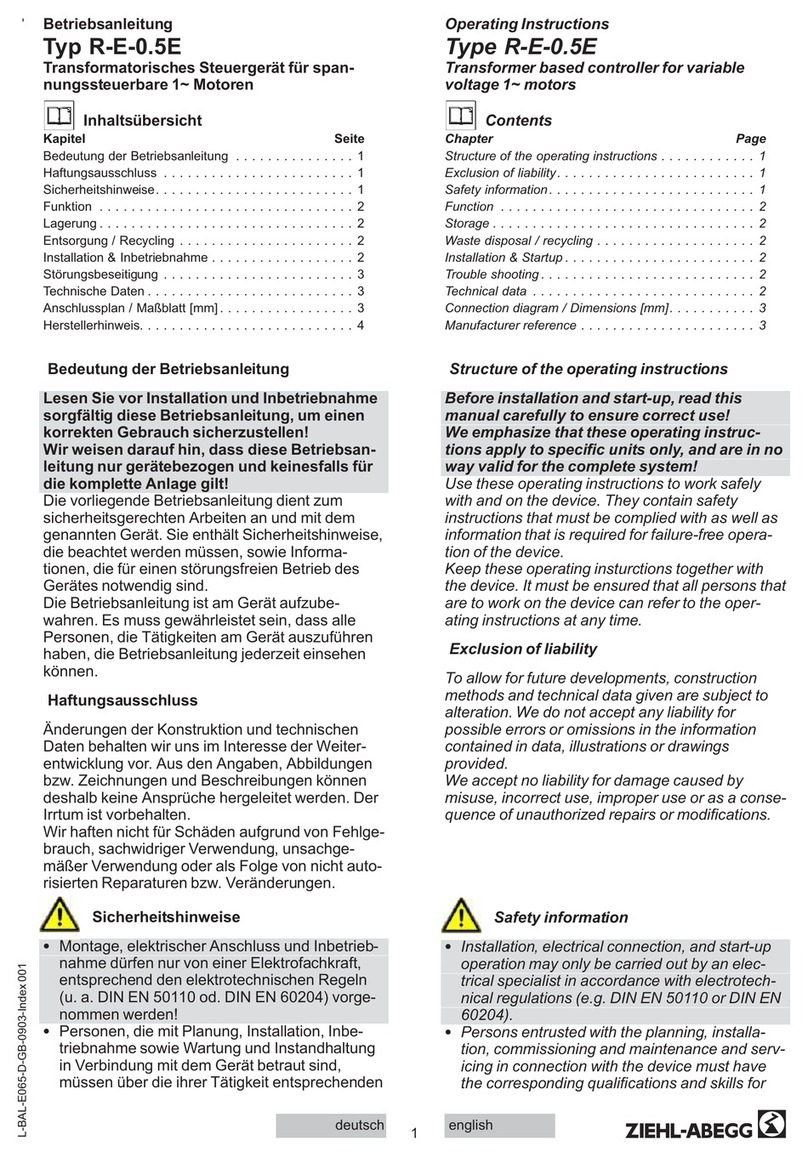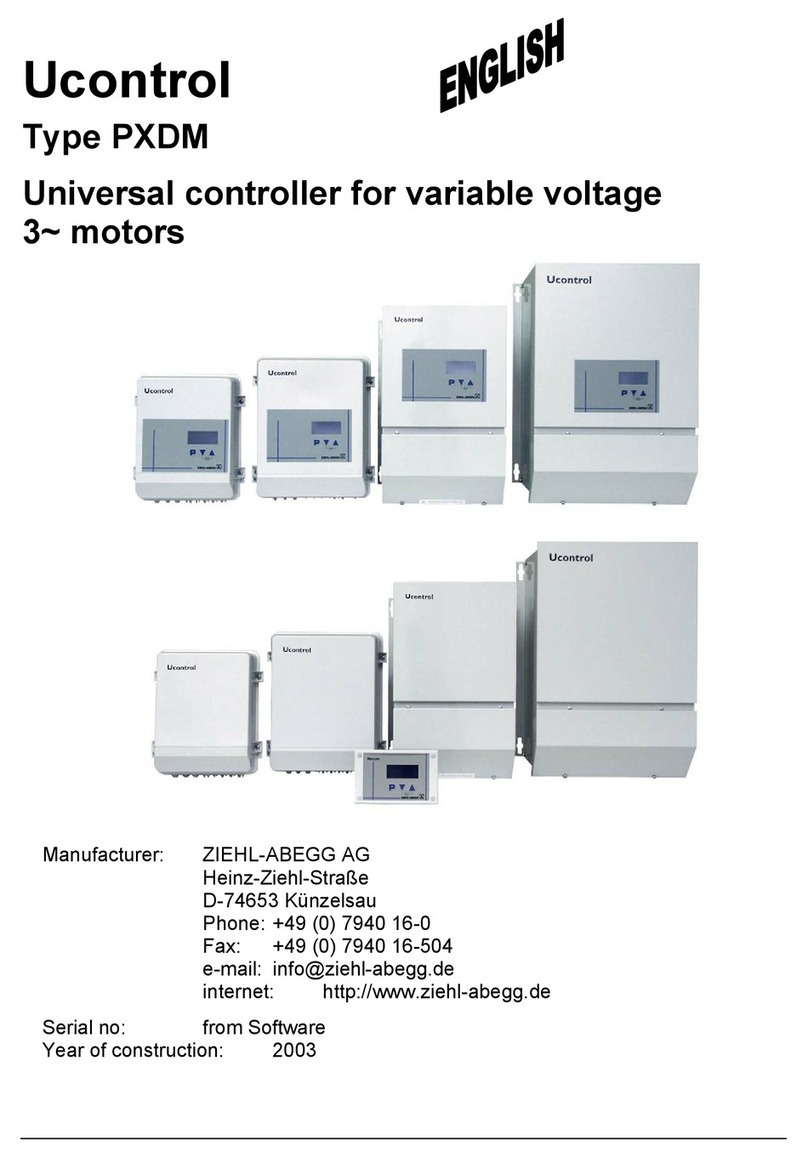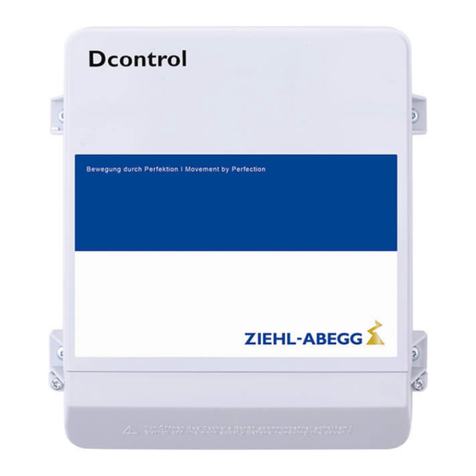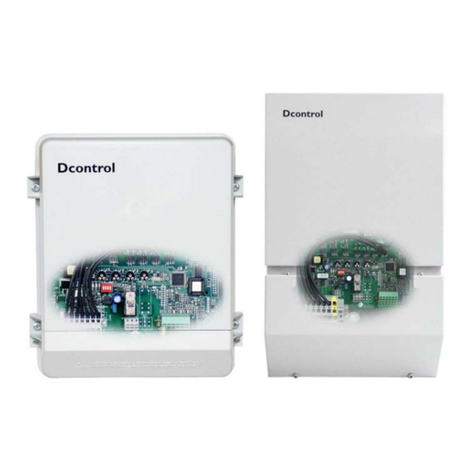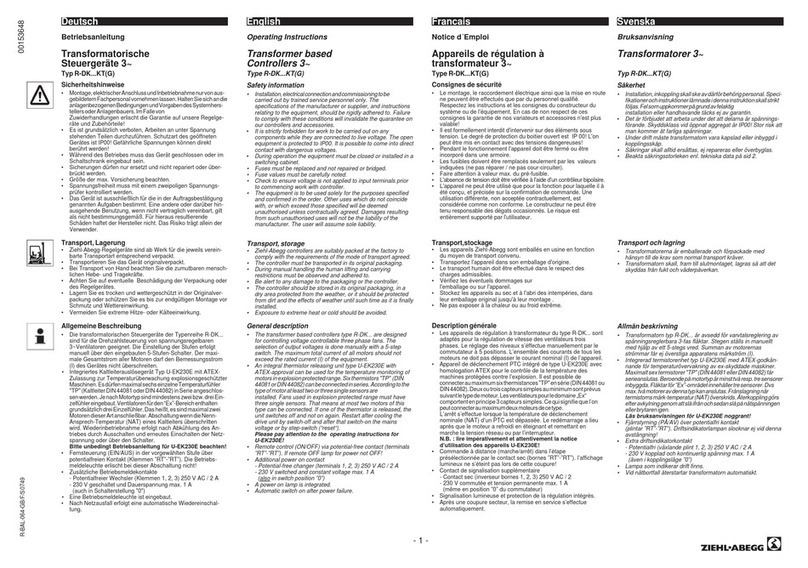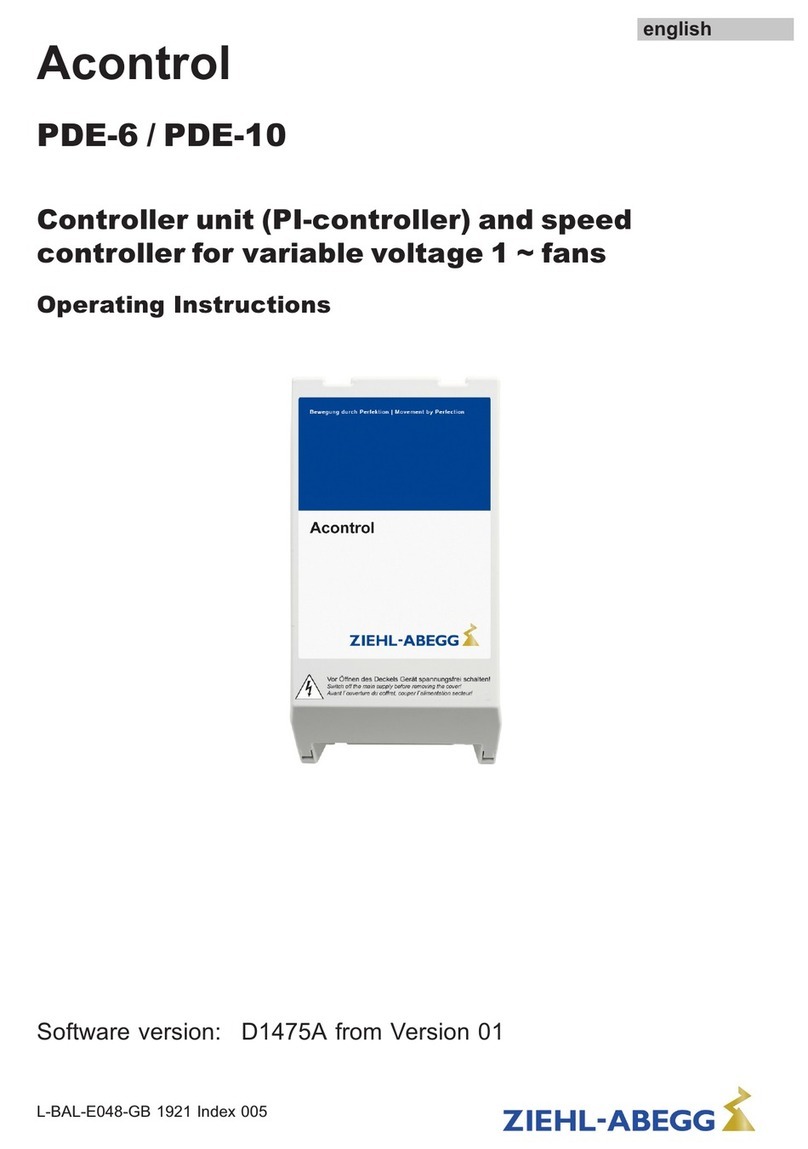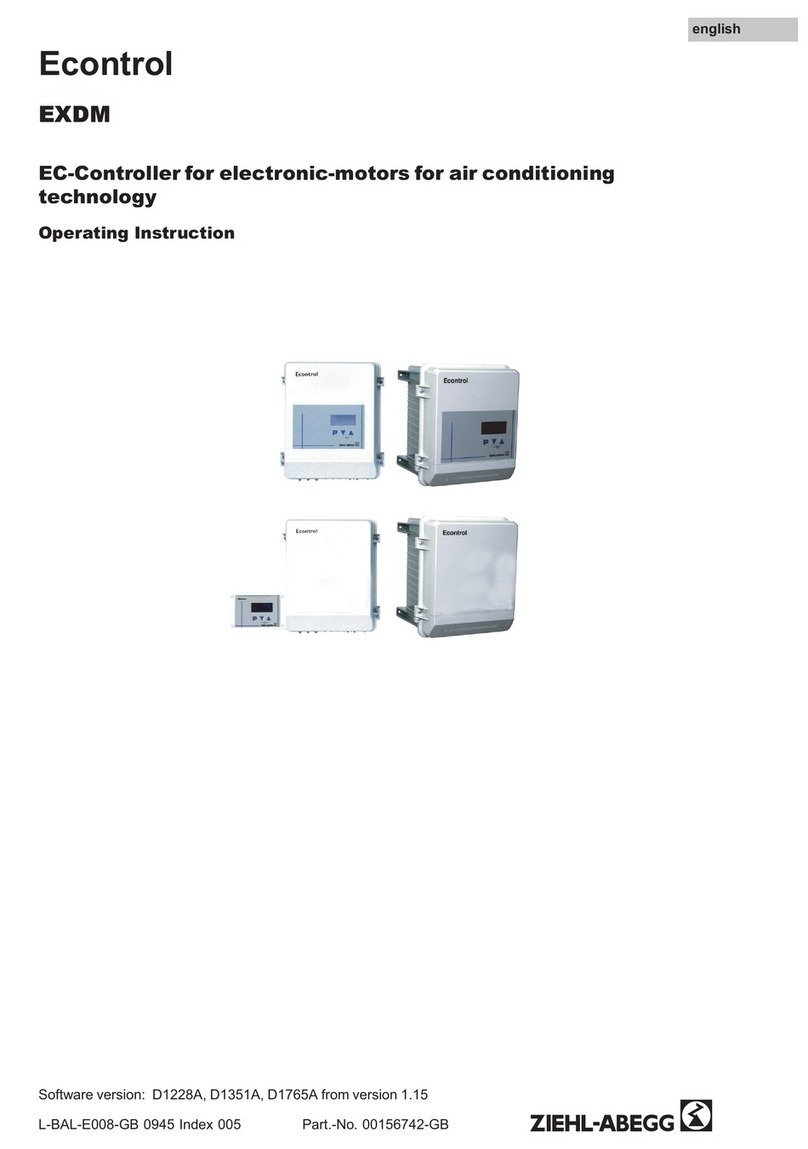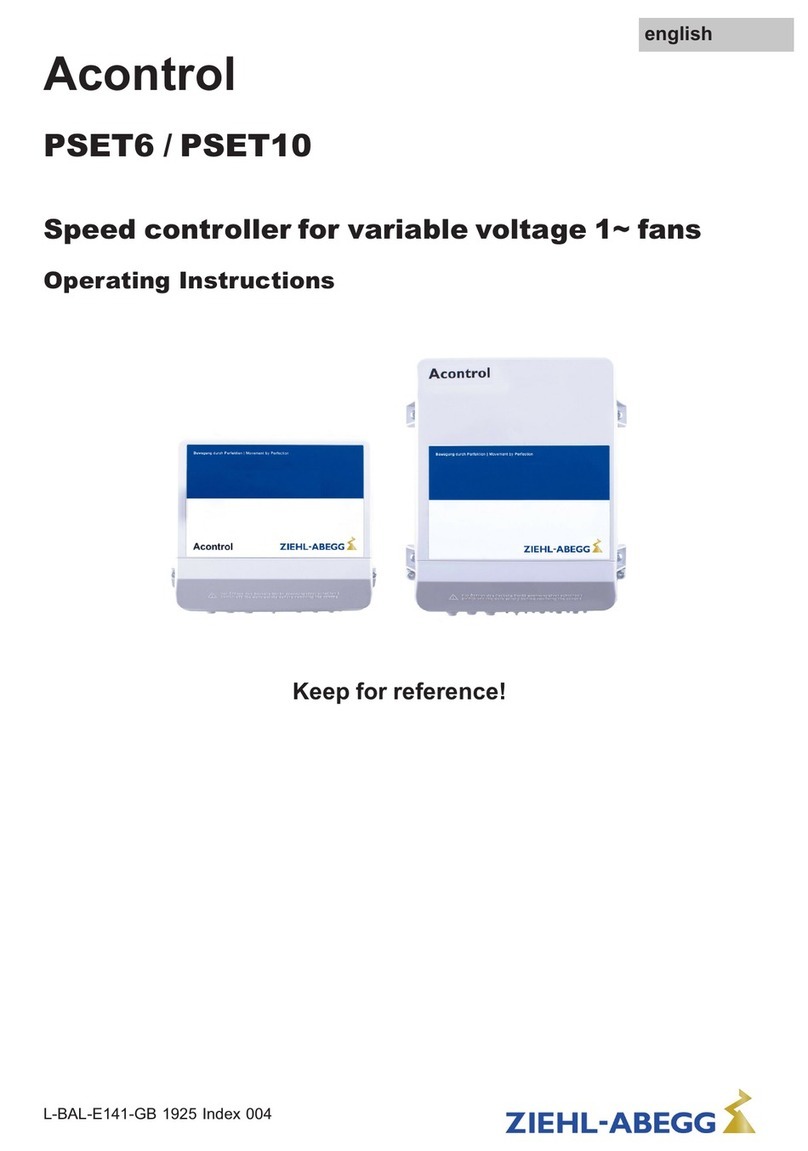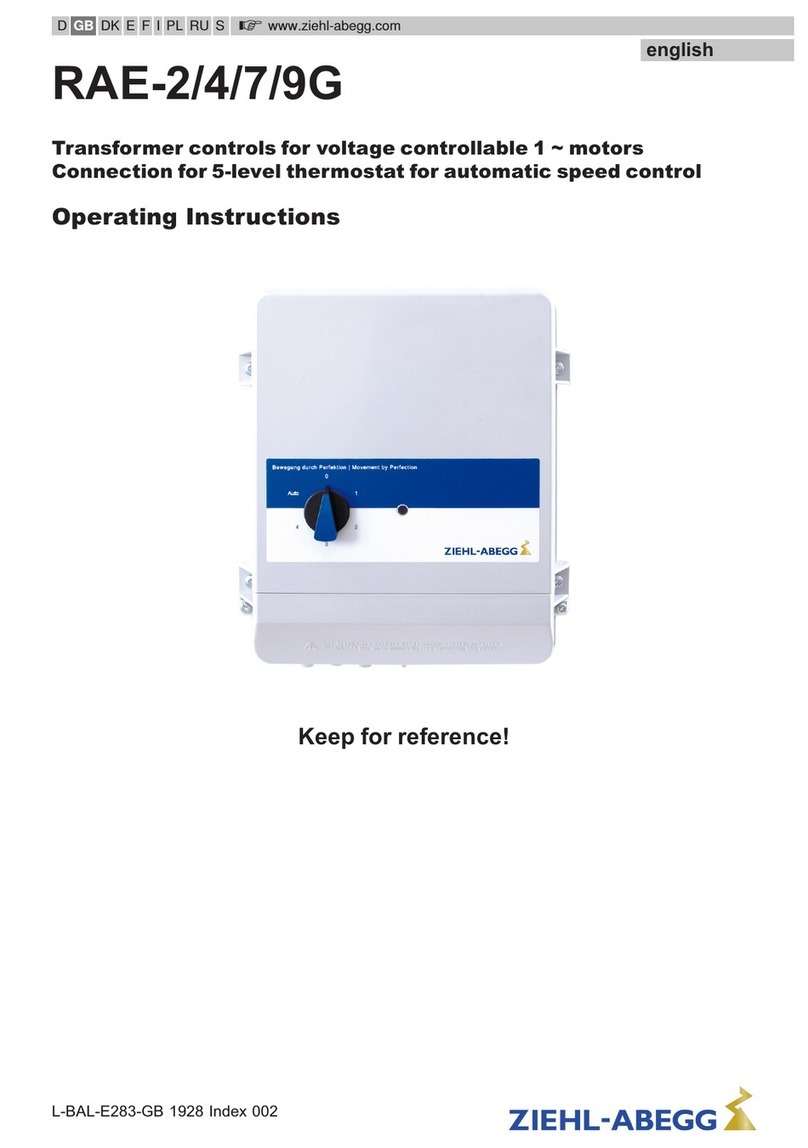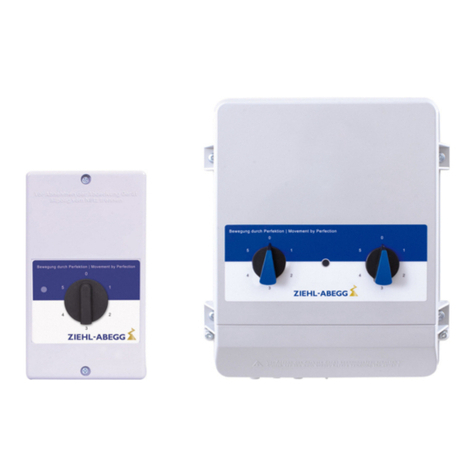
Operating Instructions PAE10E-M / PSE-6/14V Date 0618
R-TBL95_35_GB 0618 Part-No. 00158612-GB
- 3 -
1. General
Before installation and start-up, read this manual carefully to ensure a correct use.
Attention! Hazardous area!
Danger owing to electric current or voltage!!
Important information!
•The copyright for these operating instructions remains to ZIEHL-ABEGG AG, Künzelsau.
•The device is constructed in accordance with the current state of technology and the recognised safety regulations.
Nevertheless, use of the device is associated with dangers which may cause death or injury to users or third parties as
well as damage to the system and other objects.
•The device is intended exclusively for the tasks listed in the order confirmation. Any other or extraordinary uses of the
device (unless previously agreed by contract) are considered contrary to regulations. The manufacturer is not liable for
damages resulting from incorrect use. The operating company alone bears the risk.
•To allow for future developments, construction methods and technical data given are subject to alteration. We do not
accept any liability for possible errors or omissions in the information contained in data, illustrations or drawings
provided.
•The controllers are packed ex factory to suit the transport method previously agreed. Always use the original packaging
materials when transporting the controller. When transporting by hand, ensure that personnel possess the strength
required to lift and carry the device. Avoid shocks and impacts to the device. Check the packaging and controller for
damage.
•Store the controller in its original packaging in a dry and weather-proof room. The device must not be exposed to
extreme heat and low temperatures.
2. Safety measures
In the case of a malfunction or a failure of the equipment check all functions with alarms in order to prevent
injury to persons or property. Note possibility of back-up operation.
If used in intensive animal environments, any malfunctions in the air supply must be detected as soon as
possible to prevent the development of a life-threatening situation for the animals. The design and installation of
the system must comply with local regulations and directives. In Germany these include DIN VDE 0100, the
animal protection and the keeping of working animals ordinance and the pig-keeping ordinance etc.
Also note the instructions of AEL, DLG, VdS.
•Apart from the operating instructions and the obligatory regulations to be followed by users relating to accident
prevention, the recognised technical regulations must also be observed (safety and branch-related work as per UVV,
VBG, VDE, etc.).
•These devices are potentially dangerous if they are used incorrectly by untrained personnel or are not implemented
according to their specified use.
•Work on electric components/modules may only be carried out by trained electricians in accordance with
electro-technical regulations (e.g. EN 60204, DIN VDE 0100/0113/0160).
•The contractor or owner must also ensure that the electric systems and equipment are operated and maintained in
accordance with electro-technical regulations. The owner is obliged to ensure that the device are operated in perfect
working order only.
•It is forbidden to carry out work on electrically live parts. The rating given in the enclosure for the device when
open is IP00! It is possible to inadvertently touch components carrying hazardous voltages!
•During operation, the device must be closed or installed in a control cabinet.
•Fuses may only be replaced by new ones and must not be repaired or bypassed. The data for the maximum line fuse
are to be considered absolutely ()Technical data). Use only fuses specified in schematic diagrams.
•The safe isolation from the supply must be checked using a two-pole voltage detector.
•Any faults detected in the electric system/modules/operating equipment must be corrected immediately. If these faults
are not corrected, the device/system is potentially very dangerous. The device/system must therefore not be operated
when it is faulty.
